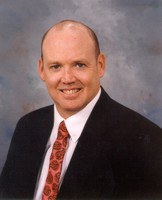Spotlight on Economics: What Can be Done With Fracking Flowback Water?
(Click the image below to view a high-resolution image that can be downloaded)
By Robert Hearne, Associate Professor
NDSU Agribusiness and Applied Economics Department
We all are aware of the oil boom in western North Dakota. Most of us are excited about the employment opportunities and economic growth that the industry has brought to the region. And many of us are concerned about potential environmental and social issues.
As most of us realize, North Dakota’s oil boom is aided by hydraulic fracturing, or fracking. This process uses a pressurized water, sand and chemical mixture to break through layers of rock and release oil and gas from the Williston Basin’s oil shale.
This technology uses large amounts of water, and large quantities wastewater are produced in the process. Since May 2012, when the U.S. Army Corps of Engineers withdrew a plan to charge drillers for the use of surplus Missouri River water in Lake Sakakawea, the quantity of water used has become less of a problem. However, the means of transporting and disposing of this wastewater has become an issue.
Today, oil drillers in the Williston Basin region dispose of their drilling wastes in deep injection wells. If this water could be treated and reused to frack new wells, it would reduce transportation costs, and the costs that drillers pay for water for their fracking operations.
Because the fresh water and wastewater are transported by truck, there are significant out-of - pocket expenses, as well as the environmental and safety costs of truck traffic. Water and wastewater transport trucks contribute to the more than 2,000 rig-related truck trips per well that have congested roads and highways in the Bakken region. Any means of reducing the amount of truck transport in the Bakken would reduce dust, improve road safety and traffic conditions, and save drillers money.
The most likely technology to treat fracking flowback water, so that it can be reused to frack additional wells, is a variant of a membrane treatment such as reverse osmosis. Reverse osmosis is the most common desalination treatment in the world. I recently supervised a master’s thesis project by Qinqing Yin in which the feasibility of alternative water and wastewater disposal and reuse strategies in western North Dakota were assessed.
Three alternatives were proposed: disposal in deep wells, centralized treatment plants and reuse of the treated water, and on-site treatment plants and reuse of the treated water. A network simulation model was developed to determine the minimum cost for the transportation and treatment/disposal system for the portion of fracking flowback water that is considered to be treatable.
A number of hypothetical, centralized treatment plant locations were proposed along roads in a grid pattern, with 10 miles as the distance between plant locations. Cost estimates were taken from a wide variety of sources.
Under most conditions, the on-site treatment and reuse option was the most cost-effective. This is because this option has the lowest transportation costs. Because the treated wastewater replaces fresh water supplies that need to be trucked in, this option would save drillers money if it were adopted.
This research does not demonstrate that drillers are bad managers. We expect that drillers, operators and transport and disposal contractors are trying to maximize profits by keeping costs low. We also expect that new technologies will be developed when the economic incentives demonstrate that they are feasible.
The rapid expansion of fracking in North Dakota and elsewhere implies that cost-saving technologies and management systems still need to be developed. More research is needed to address water and wastewater management in the Bakken region.
The proper type of membrane technology and filtering system also needs to be developed and field tested.
NDSU Agriculture Communication – Feb. 6, 2013
| Source: | Robert Hearne, (701) 231-6494, robert.hearne@ndsu.edu |
|---|---|
| Editor: | Rich Mattern, (701) 231-6136, richard.mattern@ndsu.edu |


